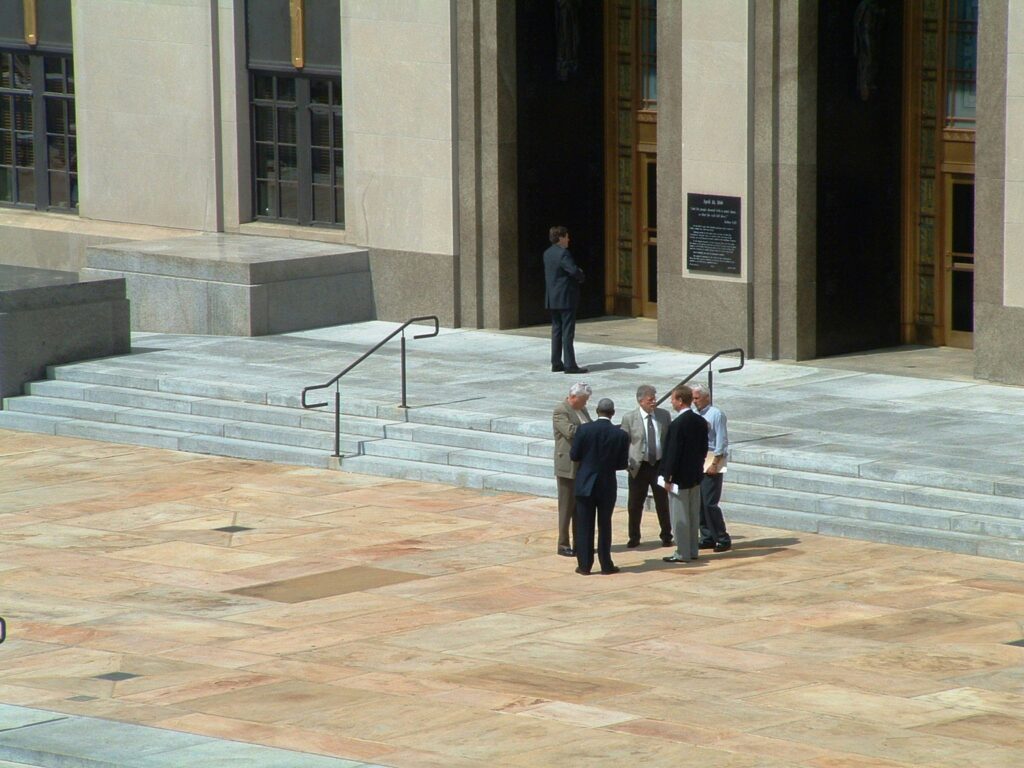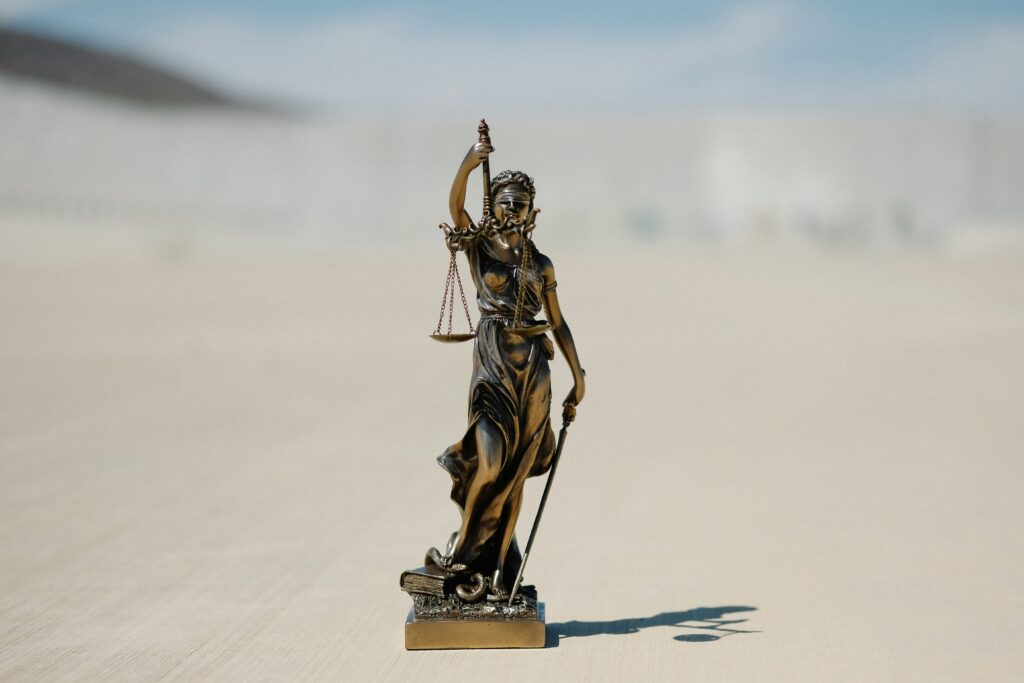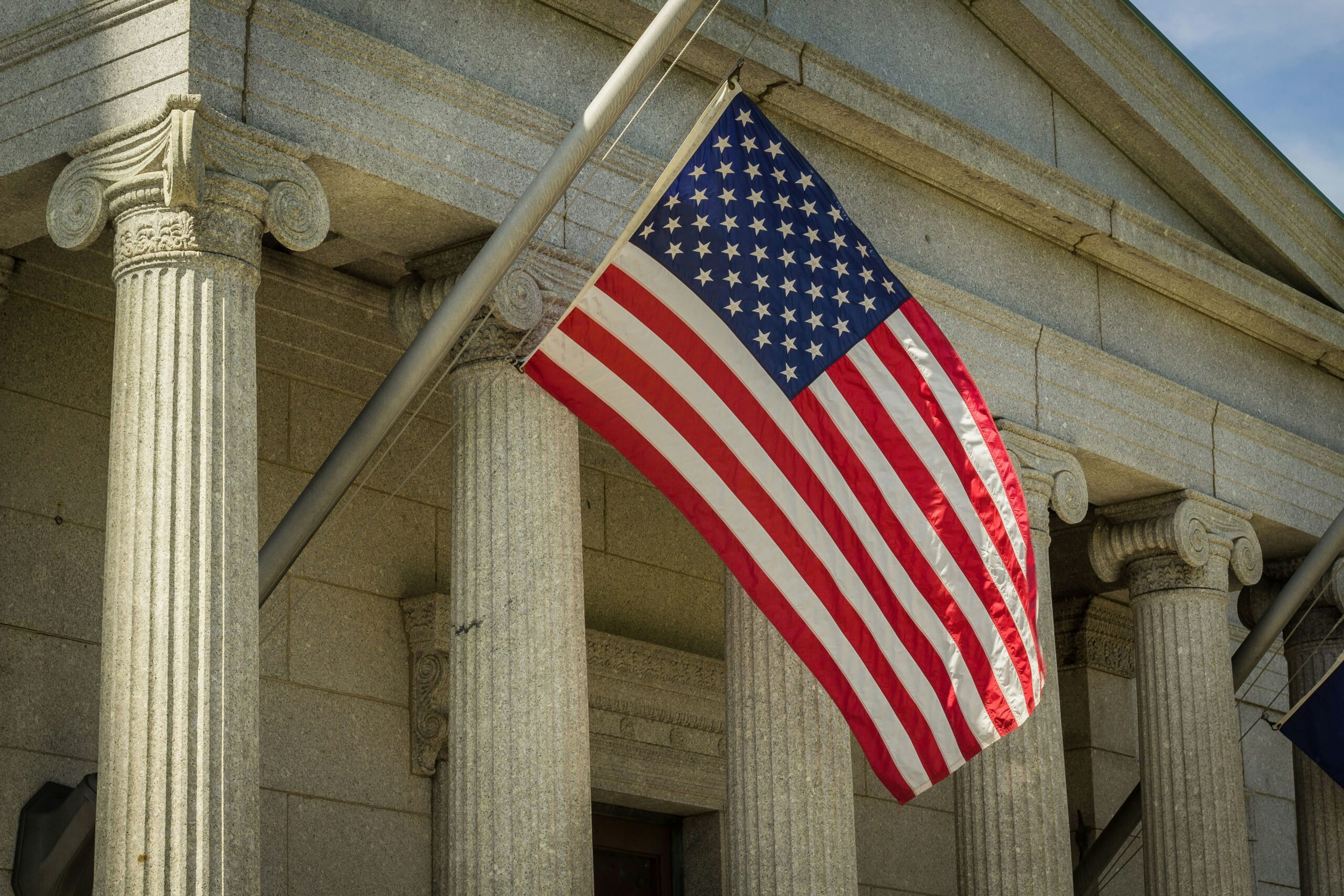When both parties involved in a personal injury case are unable to agree on a fair settlement, the case may proceed to trial, where a jury will play a key role in determining the outcome.
For example, in a slip and fall case, the injured party may insist on receiving compensation for the emotional and physical damages they suffered. The defendant, however, might argue that the injuries are not as severe as claimed, refusing to pay the full amount requested.
In these situations, it becomes the jury’s responsibility to weigh the evidence presented by both sides, assess the credibility of witness testimonies, and ultimately decide the extent of liability and the amount of compensation, if any, the injured party should receive.
Elements of a Jury Trial: What To Expect

The trial process consists of four main steps, as outlined by the Judicial Council of California, which are explained below.
Jury Selection
U.S. citizens are required to attend jury duty, and potential jurors are questioned by the judge to determine if they can be fair and impartial during the trial. Jurors who are selected must take an oath, promising to follow the law and make their decision based solely on the evidence presented during the trial.
The Trial
Jurors selected to serve in the trial are strictly prohibited from discussing the case with anyone outside the courtroom, including making any posts on social media. The trial begins with opening statements from the attorneys, followed by the presentation of evidence. This includes witness testimonies, documents, and other material relevant to the case.
After all evidence has been presented, the trial concludes with closing arguments, where each attorney summarizes their position. Before or after the closing statements, the judge explains the laws that apply to the case to help guide the jury in their deliberations.
Jury Deliberations
In this phase of the trial, the jurors meet privately to discuss the case. They review the evidence presented and the laws provided by the judge, debate issues, and work together to reach a decision. The jury must come to a unanimous or majority agreement, depending on the specific case and court requirements.
The Verdict
Once the jury has reached a verdict, the foreperson signs the necessary forms, and the decision is read aloud in court, officially concluding the trial. The verdict determines the outcome of the case, including whether the defendant is liable and, if so, the amount of damages to be awarded to the plaintiff.
Factors That Influence Juries
Trial verdicts should be determined based on the facts and evidence presented in the courtroom, rather than external influences. Jurors are expected to make unbiased and objective decisions. That being said, many factors can unfairly influence a jury.
Presentation of Facts
The way facts and evidence are presented can impact how a jury perceives a case. When attorneys present their arguments clearly and concisely, jurors can better understand the facts. Additionally, emotional appeals can influence jurors to sympathize with one side, impacting their objectivity.
Implicit Biases
Jurors may unconsciously interpret and recall information based on their biases, which can affect their decision-making. These biases can include prejudices related to race, gender, socioeconomic status, or cultural background.
Defendant and Victim Characteristics
Jurors may react differently to defendants based on their characteristics, such as treating attractive defendants more leniently. Other factors, such as age, appearance, demeanor, or the way a defendant or victim dresses, can subtly influence a jury’s perception.
Emotional Reaction
Cases involving severe injuries or traumatic events can trigger strong emotional responses from jurors. This emotional reaction can sometimes reduce objectivity, leading jurors to make decisions based on emotion rather than the facts presented.
Judge vs. Jury in California Trials

In California trials, the roles of the judge and jury are different but complementary. The judge serves as the appointed “officer” of the court, overseeing the trial and making final decisions on questions of the law. This includes determining whether certain evidence can be used and ensuring the courtroom procedures are followed according to the law.
The jury, on the other hand, composed of citizens selected through jury duty, plays the crucial role of analyzing the facts of the case. After listening to the opening statements, testimonies, evidence, and closing arguments, jurors evaluate the credibility of witnesses and weigh the evidence presented. They then deliberate privately to reach a collective decision, which could be a verdict of liability in a civil case or guilt in a criminal trial.
Generally, judges handle legal decisions during the trial, while the jury decides on the outcome based on the facts and evidence.
Contact a Los Angeles Personal Injury Law Firm
If your personal injury case goes to trial, an experienced Los Angeles injury attorney can represent you and advocate on your behalf. Our skilled personal injury and wrongful death attorneys in Los Angeles will work to identify credible witnesses to fight for the justice and compensation you deserve.
John J. Perlstein, one of the best personal injury attorneys in Los Angeles, CA, has over 25 years of experience securing fair and just outcomes in personal injury and wrongful death cases.
Reach us at (213) 583-5786 or fill out the form on our website to schedule a free consultation with a personal injury lawyer in Los Angeles. This consultation will allow us to determine how we can secure the best possible outcome for your case.
